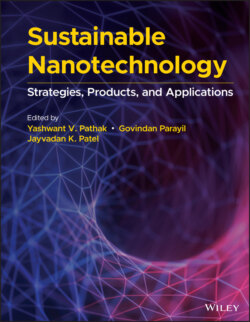Читать книгу Sustainable Nanotechnology - Группа авторов - Страница 49
2.2.1.3 Surface
ОглавлениеThe surface of NMs is a unique property, and the surface phenomenon seems to be a new direction in developing nontoxic NPs. The groups present on the surface or coating can change the physical, chemical, magnetic, electrical, and optical properties of NPs, which invariably can alter in vivo solubility, partition coefficient, distribution, pharmacokinetics, and accumulation [32–34]. The presence of oxygen on the surface can lead to the generation of reactive oxygen species that may lead to toxicity [24, 35]. In pharmaceuticals, the effect of NPs based on conformation has always been of interest for the formulation developer. The endocytic system in the body can actively remove any nanosize foreign material from the body, and same observed with drug loaded NP and cannot perform their desire role. The reason could be negatively charged cell membrane. Against such cell membrane, positive, negative, or neutral charge NPs cannot behave in the same manner. Similarly, NPs with lipophilic surface will have more affinity and eventually be quickly absorbed through the lipid bilayer membrane of the cell, while NPs coated with hydrophilic polymers such as polyethylene glycol (PEG), polyvinylpyrrolidone (PVP), and dextran avoid interaction due to the hydrophobic cell surface [16]. The surface energy of NPs alters the capacity to diffuse through the blood–brain barrier. The data shows that the anionic energy on the surface of NPs with the size range of 50–500 nm is transported through all layers of the skin, in contrast to the neutral or cationic NPs that do not have such similar characteristics [20].
